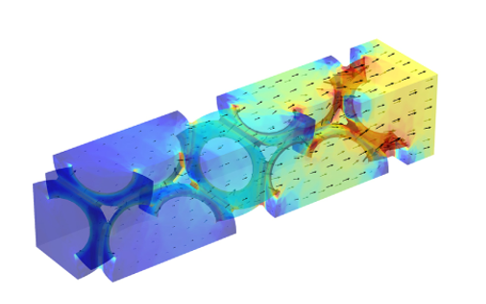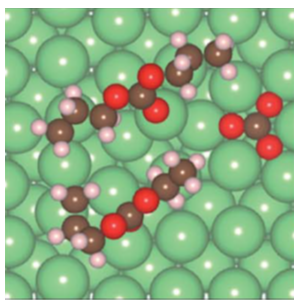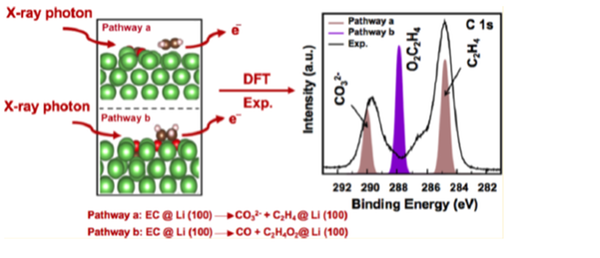Modelling of battery materials and cells

Computational simulations helps us to study stability at the electrode/electrolyte interface, ion transport, the structural evolution of electrodes during cycling, current distribution in the battery cell, and other issues.
We work broadly with computational techniques such as ab initio calculations, Density Functional Theory, Molecular Dynamics simulations and Finite Element Methods to study relevant questions for molecules, materials, interfaces and cell chemistry in batteries. We also link these methods in a multi-scale fashion, and implement machine-learning tools for prediction of behavior of different chemistries in batteries. Computational simulations helps us to study stability at the electrode/electrolyte interface, ion transport, the structural evolution of electrodes during cycling, current distribution in the battery cell, and several other issues.
The reactive surface
The surface of electrode materials is highly reactive. This leads to decomposition of electrolyte and formation of new surface layers, which ultimately control the battery’s performance. These processes and compounds are difficult to study, but computational techniques can today elucidate several of these issues. This can help us tailoring the surface chemistry.
Figure 1. Polymers decomposing on a Li-metal surface.

Polymer electrolytes
Polymer electrolytes will be critical for the realization of solid-state batteries with higher energy density and improved safety characteristics. These materials are, however, highly complex. DFT and MD are excellent tools for studying critical issues of different kinds: the electrochemical stability of different polymers and salt, how they organize on different electrode surfaces, and how ions are transported in the electrolyte and in and out of the electrode materials.
Understanding experiments
Much of the experimental results in battery research needs advanced interpretations. Computationally simulated results – both electrochemical, from spectroscopy and diffraction – can strongly aid this process by suggesting decomposition pathways, structural changes during intercalation, the spectroscopic profile of molecular segments, etc.
Figure 2. Elucidating photoelectron spectroscopy data through DFT modelling.

Modelling the cell
To capture phenomena in the battery which appears under longer use, so called ageing, it is necessary to build an electrochemical model of the entire cell. These models can then be adapted for different use scenarios, for example automotive application, heavy machinery or air transport. These models are also useful when predicting battery behavior, avoiding bottle-necks and implementing new materials with novel properties.
Figure 3. Current and temperature distribution in an ultraporous electrode.

Methodology development
Computational materials science is today progressing rapidly, with several new techniques being employed. We work in this context with evolutionary algorithms, which can help us screen very large numbers of potential structures of molecules and materials. We also work with machine-learning approaches, where we can construct and use databases for finding better performing battery materials.
References
- Assessing structure and stability of polymer/lithium-metal interfaces from first-principles calculations. https://uu.diva-portal.org/smash/record.jsf?pid=diva2:1314902
- Insights into the Li-Metal/Organic Carbonate Interfacial Chemistry by Combined First-Principles Theory and X-ray Photoelectron Spectroscopy. https://uu.diva-portal.org/smash/record.jsf?pid=diva2:1285498
- Ion Transport in Polycarbonate Based Solid Polymer Electrolytes: Experimental and Computational Investigations. https://uu.diva-portal.org/smash/record.jsf?pid=diva2:798456
- Modelling the morphological background to capacity fade in Si-based lithium-ion batteries. https://uu.diva-portal.org/smash/record.jsf?pid=diva2:1170518
- Initial Steps in PEO Decomposition on a Li Metal Electrode. https://uu.diva-portal.org/smash/record.jsf?pid=diva2:1365287
Cooperation partners
More information to come.
Contact
- If you have any questions regarding our research you are welcome to contact professor Daniel Brandell.
- Daniel Brandell
